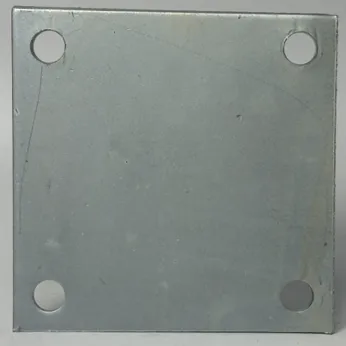loading...
- No. 9, Xingyuan South Street, Dongwaihuan Road, Zaoqiang County, Hengshui, Hebei, China
- admin@zjcomposites.com
- +86 15097380338
- Welcome to visit our website!
open mesh grp grating
Exploring Open Mesh Grating Applications and Innovations
Open mesh grating is a sophisticated design that has garnered attention across various fields, from architecture to engineering. Characterized by its lightweight, durable structure and enhanced airflow capabilities, open mesh grating serves multiple functions, making it an invaluable resource in both industrial and commercial applications.
Understanding Open Mesh Grating
At its core, open mesh grating consists of a network of intersecting bars or rods that create an open, grid-like pattern. This design allows for the easy passage of air, light, and even water, while maintaining strength and stability. The materials used in the fabrication of open mesh grating often include steel, aluminum, and composite materials, which add to its versatility and resilience in various environments.
Applications in Industry
One of the most prominent uses of open mesh grating is in the industrial sector, where it serves as flooring, walkways, and platforms. Its slip-resistant surface makes it ideal for areas prone to spills or heavy foot traffic. Moreover, the open design facilitates drainage, helping to prevent water accumulation and reducing the risk of accidents.
In chemical processing plants, open mesh grating is crucial for safety and hygiene. Its ability to allow fluids to pass through prevents pooling of hazardous materials, thereby minimizing the risk of contamination and promoting a safer working environment. Additionally, these gratings can be easily cleaned, which is essential in maintaining sanitary conditions in food production facilities.
Architectural Innovations
The architectural applications of open mesh grating are equally noteworthy. Architects have begun to incorporate this type of grating into building designs for aesthetic and functional purposes. The transparency of open mesh grating allows for dynamic play with light and shadow, contributing to the visual appeal of structures. It can be used in facades, balconies, and even as decorative elements while still providing structural support.
open mesh grp grating

Furthermore, open mesh grating can enhance ventilation in buildings, leading to energy efficiency by reducing reliance on artificial heating and cooling systems. This not only helps in lowering operational costs but also contributes to a building's sustainability profile.
Environmental Considerations
As industries and architects increasingly turn to sustainable practices, open mesh grating stands out as an environmentally friendly option. Many manufacturers are now producing grating from recycled materials, further reducing the ecological footprint associated with construction and industrial projects. Moreover, by promoting better air circulation and natural lighting, open mesh grating contributes to energy-efficient building designs that are eco-conscious.
Future Trends and Innovations
Looking forward, the future of open mesh grating appears promising with advancements in technology leading to novel applications. Innovative coatings and treatments are being developed to enhance the durability and corrosion resistance of open mesh grating, making it suitable for even harsher environments.
Smart technologies integrated with open mesh grating systems could also pave the way for real-time monitoring of structural integrity and environmental conditions, thus increasing safety and efficiency in usage.
Conclusion
In summary, open mesh grating presents a unique solution that merges functionality with aesthetic appeal across various applications. Its lightweight, durable design offers significant advantages in safety, ventilation, and energy efficiency, making it an important element in industries and architecture alike. As innovation drives the evolution of this product, we can anticipate even greater developments that will further elevate its role in modern applications and sustainable practices. This combination of utility and sustainability positions open mesh grating as a key player in the building and manufacturing sectors of the future.
-
The Rise of FRP Profiles: Strong, Lightweight, and Built to LastNewsJul.14,2025
-
SMC Panel Tanks: A Modern Water Storage Solution for All EnvironmentsNewsJul.14,2025
-
GRP Grating: A Modern Solution for Safe and Durable Access SystemsNewsJul.14,2025
-
Galvanized Steel Water Tanks: Durable, Reliable, and Ready for UseNewsJul.14,2025
-
FRP Mini Mesh Grating: The Safer, Smarter Flooring SolutionNewsJul.14,2025
-
Exploring FRP Vessels: Durable Solutions for Modern Fluid HandlingNewsJul.14,2025
-
GRP Structures: The Future of Lightweight, High-Performance EngineeringNewsJun.20,2025
